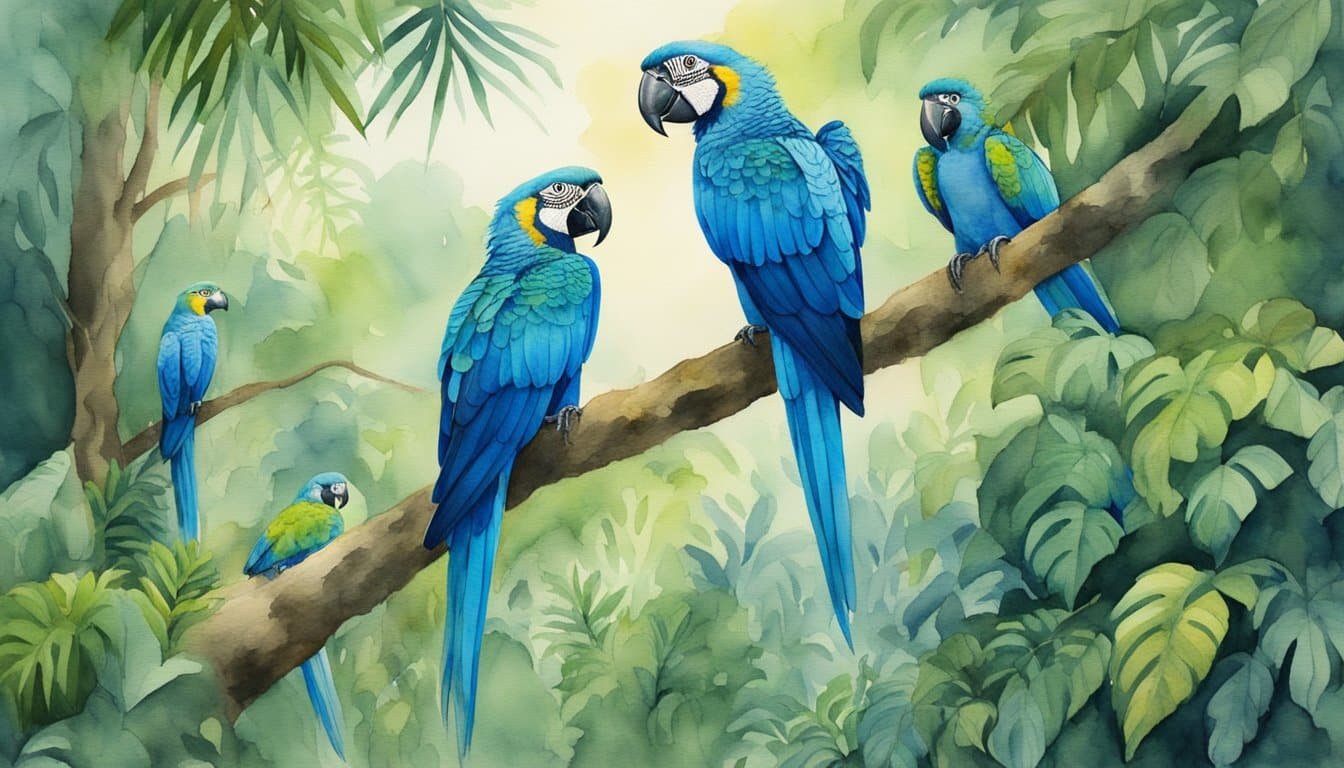Overview of the Blue Spix Macaw
The Spix’s Macaw, scientifically known as Cyanopsitta spixii, is a captivating member of the parrot family renowned for its vibrant blue plumage. While often called the Little Blue Macaw, this bird has faced serious challenges in survival, with a status that has shifted between critically endangered and extinct in the wild.
Natural History
Once native to Brazil, their natural habitat comprised riparian Caraibeira woodlands in the Brazilian state of Bahia. Adaptations to this environment made them ecological specialists contributing to their vulnerability when the habitat became compromised.
Challenges
Their struggle for survival is primarily due to human activity. Deforestation and the illicit pet trade drastically reduced their numbers in the wild, leading to extinction in their natural setting around the early 2000s.
Conservation Efforts
Persistent conservation efforts became imperative to prevent total extinction. Captive breeding programs gave a glimmer of hope with successful hatching of chicks including at facilities like Al Wabra Wildlife Preservation. While the captive population has grown, the ultimate aim is the reintroduction into their natural habitat through a carefully monitored release effort.
The Future
The work towards releasing the Spix’s Macaw back into the wild is ongoing and multifaceted, involving habitat restoration and community engagement. With each successful breeding and step towards wild release, they inch away from permanent loss and towards a sustained presence in Brazil’s wild landscapes.
Cultural Impact
Not only are Spix’s Macaws important ecologically, but they’ve also captured the hearts of people worldwide, becoming cultural icons featured in films and sparking an increased interest in avian conservation.
Conservation Efforts and Reintroduction

The Spix’s Macaw, a bird once shrouded by the threat of extinction, is now the subject of concerted conservation efforts. This involves breeding programs, habitat understanding, and continuous challenge mitigation, encapsulated in a narrative of rediscovery and scientific classification.
Breeding and Conservation Programs
Efforts led by entities like the Association for the Conservation of Threatened Parrots have resulted in successful captive breeding programs. These initiatives are fundamental in bolstering the population of Spix’s Macaws for eventual reintroduction into their natural habitat in Brazil. The Brazilian Government and ICMBio’s significant investment in creating and maintaining these conservation programs showcase a strong commitment to biodiversity.
Habitat and Natural Behavior
In the arid Caatinga biome, the Spix’s Macaw thrives amidst the dry forest and Rio São Francisco. The Spix’s Macaws have adapted to this unique ecosystem, foraging on local floral species like the Tabebuia aurea and Euphorbiaceae and using the riparian caraibeira trees for roosting and nesting. Understanding these behaviors is crucial for the development of a strategic reintroduction plan.
Challenges and Threats
Despite these efforts, numerous challenges such as deforestation, climate change, habitat destruction, and the illegal pet trade persist. Birds like the Spix’s Macaw are also up against ecological changes like desertification, erosion, and threats from invasive species like Africanized honeybees. These factors all contribute to the complexity of conserving the Spix’s Macaw and necessitate a multi-faceted approach by conservation organizations.
Scientific Discovery and Taxonomy
The Spix’s Macaw, categorized taxonomically as Cyanopsitta spixii, was first documented by the naturalist Johann Baptist von Spix, giving it its namesake. Part of the Psittacidae family and the Arini tribe, it’s one of the many marvels amongst neotropical parrots, characterized by their intriguing vocalizations and rich blue plumage. The long journey of scientific discovery surrounding this species continues to contribute to the understanding and preservation of these New World parrots.

